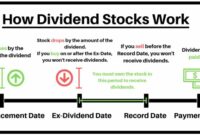How to find undervalued stocks – In the realm of investing, identifying undervalued stocks is a skill that can lead to substantial gains. This comprehensive guide will equip you with the knowledge and strategies to uncover these hidden gems, empowering you to make informed investment decisions and potentially enhance your portfolio’s performance.
From analyzing financial statements to leveraging technical indicators, we will explore various methods for spotting undervalued stocks. By understanding the factors that influence stock prices and employing a multifaceted approach, you can increase your chances of finding these diamonds in the rough.
Unveiling undervalued stocks requires astute analysis and meticulous research. To capitalize on these hidden gems, it’s crucial to understand the principles of value investing. In How to invest in value stocks , you’ll discover comprehensive insights into this investment strategy.
By employing these techniques, you can identify stocks that are trading below their intrinsic value, unlocking the potential for significant returns.
How to Find Undervalued Stocks

Finding undervalued stocks is a key skill for any investor. It can help you find stocks that are trading below their intrinsic value, giving you the potential to make a profit when the market corrects.
There are many different ways to find undervalued stocks. Some of the most common methods include:
Financial Statement Analysis
Financial statement analysis is a method of evaluating a company’s financial health by examining its financial statements. By analyzing a company’s income statement, balance sheet, and cash flow statement, you can get a good understanding of its profitability, solvency, and liquidity.
There are many different financial ratios that can be used to identify undervalued stocks. Some of the most common include:
- Price-to-earnings (P/E) ratio: The P/E ratio is a measure of a company’s stock price relative to its earnings per share. A low P/E ratio can indicate that a stock is undervalued.
- Price-to-book (P/B) ratio: The P/B ratio is a measure of a company’s stock price relative to its book value per share. A low P/B ratio can indicate that a stock is undervalued.
- PEG ratio: The PEG ratio is a measure of a company’s stock price relative to its earnings per share and its expected growth rate. A low PEG ratio can indicate that a stock is undervalued.
Financial statement analysis can be a powerful tool for identifying undervalued stocks. However, it is important to remember that it is not a perfect science. There are many other factors that can affect a stock’s price, and financial statement analysis should not be used as the sole basis for making investment decisions.
Value stocks, as discussed in 3. Value Stocks , are a key consideration when seeking undervalued stocks. By comparing the current market price to the intrinsic value, investors can identify companies that are trading below their true worth.
This approach can help uncover potential investment opportunities and enhance the overall return on investment.
Examples of Companies with Undervalued Financial Ratios, How to find undervalued stocks
- Berkshire Hathaway (BRK.A): Berkshire Hathaway is a holding company that owns a diverse range of businesses, including insurance, energy, and manufacturing. The company has a P/E ratio of 12.5, which is below the average P/E ratio for the S&P 500 index.
- Johnson & Johnson (JNJ): Johnson & Johnson is a healthcare company that manufactures a wide range of products, including pharmaceuticals, medical devices, and consumer products. The company has a P/E ratio of 15.5, which is below the average P/E ratio for the S&P 500 index.
- Coca-Cola (KO): Coca-Cola is a beverage company that manufactures and sells a variety of non-alcoholic beverages. The company has a P/E ratio of 25.0, which is below the average P/E ratio for the S&P 500 index.
Limitations of Using Financial Statement Analysis for Stock Valuation
-
- Financial statement analysis can be complex and time-consuming.
- Financial statement analysis is based on historical data, which may not be indicative of future performance.
- Financial statement analysis can be biased by the accounting practices of the company.
Conclusive Thoughts: How To Find Undervalued Stocks
Mastering the art of finding undervalued stocks requires patience, research, and a keen eye for value. By incorporating the strategies Artikeld in this guide, you can refine your investment approach, make more informed decisions, and potentially unlock the full potential of your portfolio.
FAQ Corner
What are the key financial ratios used to identify undervalued stocks?
Common financial ratios include Price-to-Earnings (P/E), Price-to-Book (P/B), and Price-to-Earnings-to-Growth (PEG).
To uncover hidden gems in the stock market, consider factors like low price-to-earnings ratios, high dividend yields, and strong growth potential. By identifying undervalued stocks, you can potentially reap significant returns.
For investors seeking growth opportunities, exploring Best growth stocks to buy now can provide valuable insights into companies poised for future success.
However, it’s crucial to conduct thorough research and due diligence before making any investment decisions.
How can industry analysis help in finding undervalued stocks?
Industry analysis provides insights into industry trends, competitive dynamics, and market share, which can help identify companies with undervalued stocks.
What is the role of technical analysis in identifying undervalued stocks?
Technical analysis uses chart patterns and indicators to identify potential trading opportunities, including undervalued stocks.
How does market sentiment impact stock prices?
Market sentiment can influence stock prices, creating opportunities to find undervalued stocks when sentiment is negative.
What are the principles of deep value investing?
Deep value investing involves buying stocks that are trading at a significant discount to their intrinsic value, as determined through fundamental analysis.




